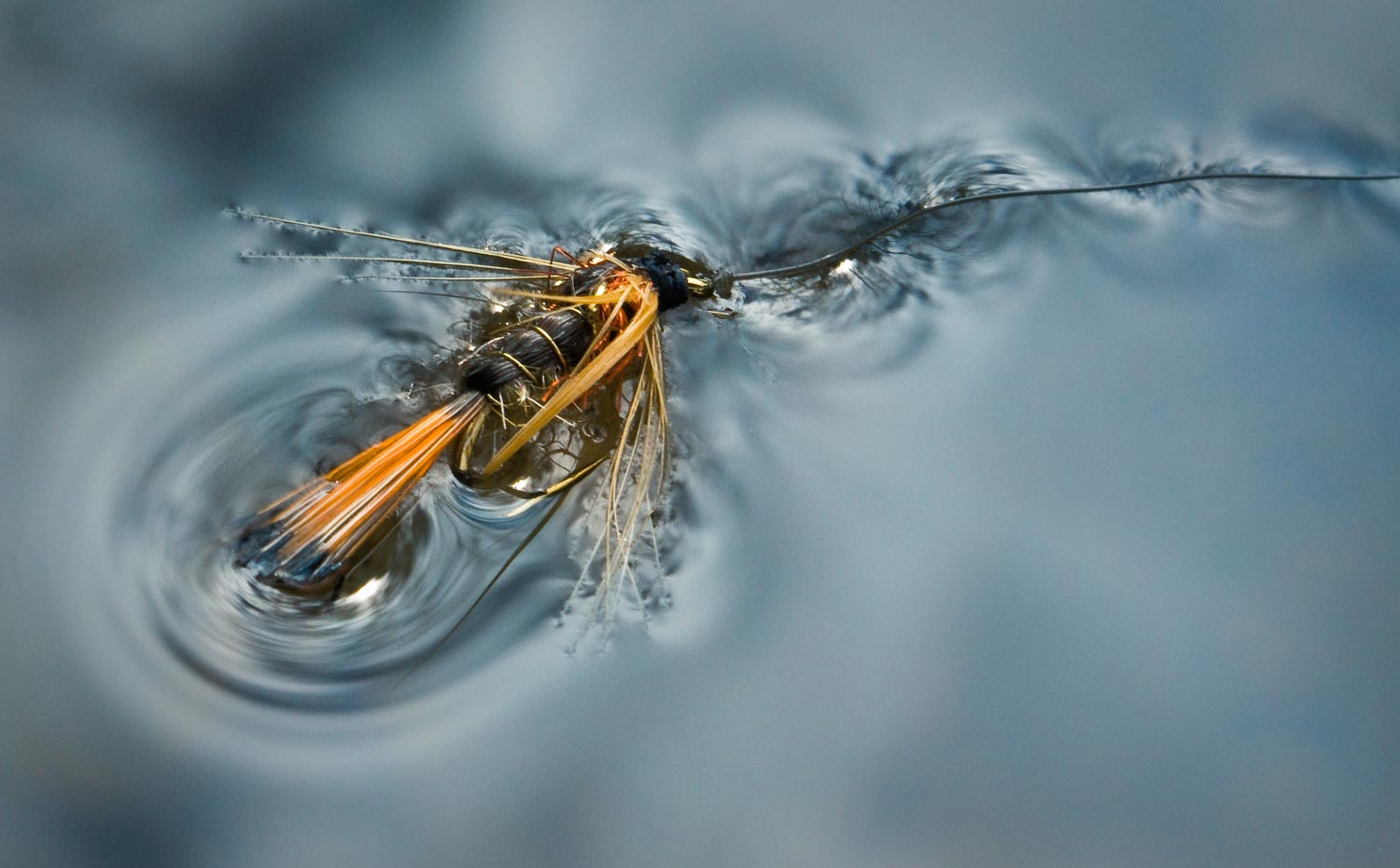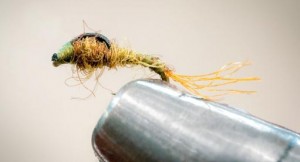Tell me if this sounds familiar.
You’re kneeling at the edge of a slow glassy pool watching several big trout inspect what floats above them. You change flies, again, and make yet another perfect presentation, only to watch the fish move three feet out of the way as your fly passes by.
It’s a common scene on heavily pressured, catch-and-release trout streams. Big educated fish who have seen a lot of flies don’t come to hand easily. Kent and I were in exactly this scenario just the other day and were able to turn it around using a simple but often overlooked technique. A floating nymph.
Fish see dry flies in a very different way than we see them. Before the fish inspects your thread color or how many turns of hackle you’ve used it sees the impression of the fly on the water. These slight dimples in the surface film are incredibly powerful triggers for feeding fish. The curved surface of the water, which supports the fly, focuses the light creating a bright spot that get the fish’s attention like a flashing light. This is why fish commonly eat Thingamabobbers.
Fish who live under constant pressure from anglers become very savvy at reading these impressions on the surface film. They eat only those items that make subtle, life-like impressions. The kind of impressions made by emerging insects struggling in the film. Nothing I know of is a better imitation than a floating nymph.
Start with the right nymph. It must be unweighted. A nymph tied with lead or a bead will never float. It should also have the right kinds of materials. Bushy, natural materials like hare’s ear dubbing float well and a little hen hackle is a real plus. Apply a little bit of Gink to the nymph to keep it dry and it will float well. Present the fly just as you would any emerger.
I’ve seen this trick work time and again. I used it the other day on fish who had seen every dry in my box and were unimpressed. They fell all over themselves to eat it, literally charging eight feet to grab my fly. That’s a rewarding feeling. Next time you find yourself being scorned by selective trout, try a floating nymph. You’ll like the results.
Click here to see a video of Ronnie Hall tying his floating nymph pattern.
Come fish with us in the Bahamas!
Louis Cahill Gink & Gasoline www.ginkandgasoline.com hookups@ginkandgasoline.com Sign Up For Our Weekly Newsletter!


Sounds like a winner, Louis. I like the floating nymph video as well.
Great advice. Thank you.
Thats a dang fine tip! I have never tried it, but it makes a boat load of sense. Thanks for sharing Louis!
Pingback: [Video] Ronnie Hall's Floating Baetis Nymph • Fly Fishing Reporter
You are correct it works well. You may want to add a dropper about 5-7″ below the floating nymph, which acts as a rising emerger. At the end of the drift allow the bottom nymph to create some drag and lift your tip slowly it allows the dropper to rise as a emerger.
Nothing is more deadly on the clam flats of the mataura thn a small floating nymph within the film. Great stuff!
I know about the worth of spents and emergers in difficult slow water or flat calm situations, but this is new to me. Even to me.
I’ll try it next spring and summer on an extremely pressurized water, if I will remember.
Thanks for the out of the (nymph-) box thinking!
I’m your Huckleberry.
I keep a few unweighted pheasant tail nymphs in my dry fly box tied on size 18 and 20 _3x long curved shank hooks for this very purpose. works like a charm most of the time.
Pingback: January 3, 2014: TGIF Link Round-Up | Feather and Fin
Excellent post! Thanks for sharing this —
TB
Pingback: The Magic of Soft Hackles | Fly Fishing | Gink and Gasoline | How to Fly Fish | Trout Fishing | Fly Tying | Fly Fishing Blog
That tippet floating and disturbing the surface beside the fly spooks me. It usually spooks wary trout also. On smooth flat water a degreased tippet next to the fly will be much more successful. On stillwater it is a must.
Pingback: Floating Nymphs for Selective Trout | MidCurrent
Pingback: Floating Nymphs for Selective Trout - Lifestylebin
I propose we dub these flies “drymphs”.